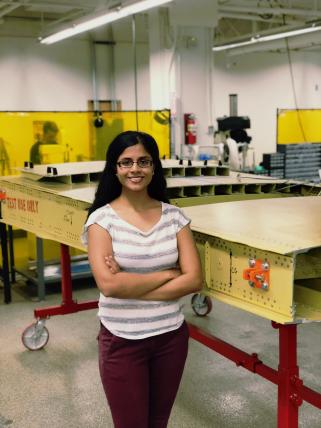By Krithika Manohar, Applied Mathematics PhD graduate
After graduating this summer with a PhD in applied math, I am headed to a postdoctoral position at Caltech. Many people confuse a postdoc with even more schooling. I’ve had to explain to my exasperated grandparents that a postdoc is more of a research apprenticeship, and that I am, in fact, done with “schooling”. Some of my friends still think of PhD students as perpetual students, when in reality we quickly diverge from taking classes, into teaching and a dizzying array of research topics. This is particularly true here in Applied Mathematics at UW (affectionately known as Amath). My fellow graduates have embarked upon careers in academia, national labs, tech giants, and even medicine. Even universities without Amath departments are peppered with applied mathematicians in their faculty. We may owe it to the versatility of this degree - and the versatility of those who seek it.
My trajectory to Amath was certainly unconventional. I initially studied animation for two years at the Massachusetts College of Art. At that point I was required to take the dreaded math/science elective, but the only course offered was always full. Instead I decided to take Calculus over the summer at the nearby UMass campus, in spite of dire warnings from classmates. It was strangely both challenging and fun, and to my surprise, it came effortlessly! I was struck by the beauty of the subject and fell in love with mathematics. That summer I switched schools, much to the bewilderment of friends and family, to major in math and computer science. Even within math, too many areas interested me, and I knew I wanted to go further in my studies. After applying to several pure and applied mathematics PhD programs, I was intrigued by the eclectic mix of student research in this department – nonlinear waves, neuroscience, brain injuries, and cancer. My background was certainly not unusual here - in some ways the students reminded me of my MassArt colleagues, with artists and musicians scattered throughout the department.
Like my fellow students, I soon began to appreciate the freedom to delve into any topic within and outside applied mathematics. I was fortunate enough to find like-minded advisors, Nathan Kutz (Amath) and Steve Brunton (Mechanical Engineering), who expertly navigate the nebulous divide between the mathematical, physical, and data sciences. Nowhere was this more true than in our research on sparse sensor placement, which reduces the need for cumbersome data collection and processing in imaging applications. It opened up collaborations with the Boeing Advanced Research Center on aircraft manufacturing, with the goal to reduce expensive laser scanning in the assembly process. We had a major breakthrough when we realized that my sensor placement method reproduced the same high-dimensional laser scan data with only a fraction of carefully placed measurements. This resulted in our method being deployed into Boeing production, and tremendous cost savings for the company. I especially enjoyed the many caffeine-fueled brainstorming sessions with Boeing engineers and applied mathematicians like Tom Hogan, when we translated industry jargon into some really exciting math problems. Interestingly enough, Boeing has a dedicated applied math group. Mathematicians may view us as engineers, and engineers may view us as mathematicians - but they can all agree that we are useful to have around.
Such experiences are not uncommon in the department, as many students collaborate externally with the Allen Institute for Brain Science, Fred Hutchinson Cancer Research Center, Boeing and many more. Applied mathematicians can delve into any subject, from neuroscience to aeronautics, maybe because we are versatile to begin with. Many of us majored in secondary subjects, from physics, economics, computer science, to biology and even animation, before coming here. Once we get here, we are encouraged to work with anyone, on nearly anything. Once we leave, we defy categorization.
